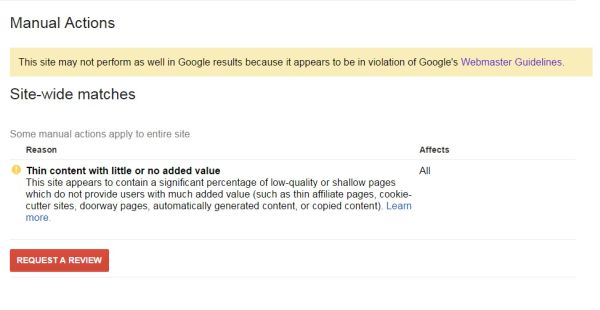Have you ever wondered why your website isn’t generating any traffic?
Perhaps you have traffic, but it’s the wrong audience and not converting. Maybe it’s because you are still living in the past.
Many are still using SEO practices that were effective years ago, but have no value today.
If that’s the case, you need to rethink your SEO strategies.
Best SEO practices evolve, over time, as Google and the other search engines change ranking methods and algorithms.
SEO is a practice that never stays constant.
Whether you consider yourself a marketing professional or a newbie, you’ll only stay on top of your game by knowing what works and what is outdated.
In this post, we’re going to discuss the reasons you may need to rethink your SEO approach, by exploring practices that no longer work.

1. Dated Content Marketing Practices
If you still consider keyword density an integral part of your content marketing, knock it off.
That practice dates back to a time when Google used strings of meta data for rankings.
Today, Google uses artificial intelligence in the form of RankBrain to understand the context of a page.
Not only does keyword stuffing make your content appear spammy, in the most egregious cases you could also trigger the Panda algorithm and take a ranking hit.
Instead of worrying about keywords, focus on being contextually relevant and genuinely useful to the users
2. Dated Title Tag Practices
Stuffing keywords in your titles is no longer a recipe for success and could even be counterproductive.
Study after study shows pages now ranking for keywords that neither appear in the title nor on the page.
Instead of worrying about keyword placement in the title, think about creating a snippet that describes the page and encourages users to click on it
3. Paid Link Building for Higher Rankings
There was a time when pointing “enough” exact match anchor text links from high PR URLs to your page would guarantee top ranking. I’m not naïve enough to say this practice is dead, (like public PageRank) but it certainly is on life support.
Just take a look at any of the black hat forums and you will find members bemoaning the fact that Private Blog Networks (PBNs) just don’t work like they used to.
Link building is still crucial for SEO success, but after the release of the Penguin algorithm, things are different (see: Link Spamming in the Age of Google Penguin 4.0 to understand why). Cutting corners and taking shortcuts in link building is a waste of time.
You must shift your attention to acquiring high quality, topically relevant links, rather than focusing on getting any link. If you know how to properly execute link building, less is more.
4. Pointless Press Releases
Few SEO practices have been abused like the press release.
There was a time that SEO practitioners would create a stream of nonsensical press releases for the sole purpose of getting an exact match anchor text link.
Of course, Google caught onto this practice.
In the end, Google devalued these links and many of the PR firms decided to nofollow their links.
When you decide to issue a press release, it shouldn’t be for getting a link. A press release should only be created for a genuinely newsworthy event.
If you can’t honestly say that you would issue a press release, even if it held no SEO value, then you probably shouldn’t do it.
5. Reliance on Automation
Auto-generated or spun content is one of the most prevalent remnants of a long-gone SEO era.
With Google on a mission to deliver quality search results and a good user experience, there is no room for this garbage in the SERPs.
If you automatically generate, copy, or spin content, don’t be surprised when you’re slapped with a pure spam penalty.
That said, natural language generation programs (NLG) have been successfully used at the enterprise level to create content at scale. NLG, a form of artificial intelligence (AI), produces content based on data input.
For smaller businesses, nothing beats original content written by humans.
6. Disregarding the Mobile Experience
More than 60 percent of searches done on Google are from mobile devices. With Google’s commitment to a mobile-first index, this can no longer be ignored.
To succeed online, websites must be seamlessly optimized and responsive across all platforms, including tablets and mobile devices
The current algorithm factors in at least some UX elements, specifically distracting pop-up advertisements.
If you aren’t putting users first, your chances at maximizing online visibility will diminish.
7. Publishing Thin Content
Gone are the days of writing a keyword-“rich” (a.k.a., spammy), 300- to 500-word article to rank for anything competitive.
In most cases, it’s a waste of time.
In the worst cases, it will draw a penalty.

To get maximum visibility on search engines, long-form content rules. Studies have shown that blog post pages with over 2,000 words ranked higher than shorter blog posts.
If you have any doubts, do a quick search of whatever pops into your head right now and you’re likely to find long-form content.
8. Depending on Guest Blogging for Link Building
The only “SEO tactic” abused more than press releases is guest blogging.
Prior to Google’s public warnings against this practice, “online marketing strategists” took every blogging opportunity to write content, irrespective of whether the content was good, bad, or relevant. I still see tons of offers for guest posting on “authority websites.”
Selling blog posts became a big enough problem that Forbes, Entrepreneur, & Inc, among others, had to start adding nofollow tags to external links.
Long story short: if you engage in guest blogging, ensure that you do it on relevant websites – sites that are recognized as trusted in your niche. Forget about high volume guest blogging on low-quality websites.
9. Depending on ‘Trophy Phrases’ for Quality Traffic
Another misconception about SEO is that ranking highly for a “trophy” or head phrase translates into a high volume of quality traffic to your site.
There’s no denying that high ranking means that your page will be seen by more people. However, this isn’t a guarantee that you’re going to receive more click-throughs or conversions.
As a rule of thumb, trophy phrases drive traffic, but long-tail drives conversions.
Your keyword strategy should be contextual in nature. Your webpages need to describe, in detail, precisely what your product or service delivers.
The Takeaway
Search engine optimization is unique. It is the only area that I am aware of where doing the same thing, over time, will actually yield different results. That would normally be considered insanity.
Because search algorithms are fluid and always changing, your approach to SEO must be fluid as well.
More SEO Strategy Resources Here:
- 5 Things Every SEO Strategy Needs
- 3 Simple Ways to Build a Winning SEO Strategy on a Shoestring Budget
- See, Think, Do, Care: A New Way to Communicate Your SEO Strategy
Image Credits
In-Post Photo # 1:Wokandapix / Pixabay
In-Post Photo # 2: Screenshot taken by Chuck Price from Google Product Forums , October 2017.





